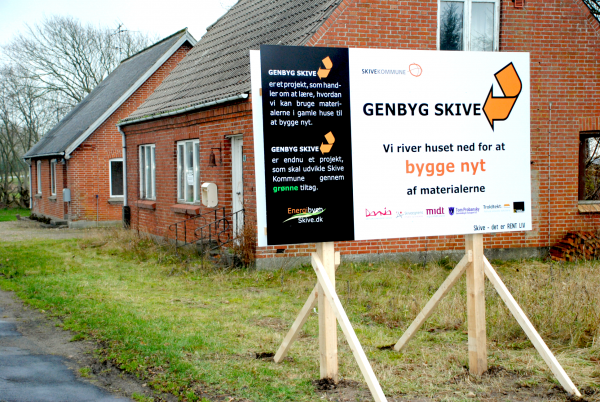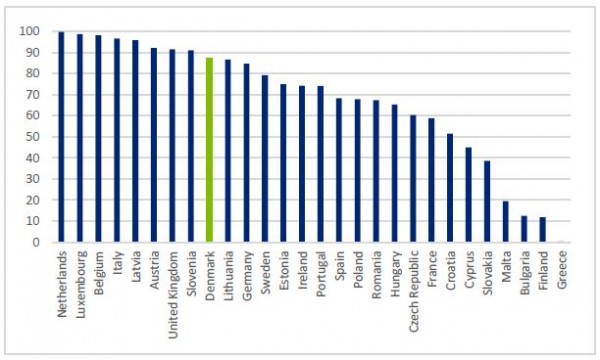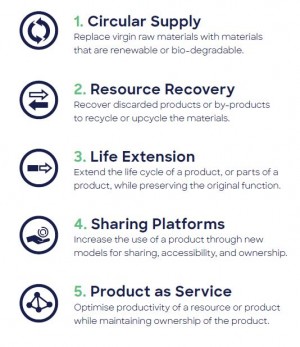Circularity City- Strong partnerships on circular construction in the Central Denmark Region
The Central Denmark Region has for many years been creating a more sustainable society by investing in circular economy, increasing material recycling and increasing the use of green energy. The smart cities of the future are based on a transition to a circular economy. Circularity City is one of the region's ongoing projects, combining circular economy with smart and sustainable urban development. The project aims at strengthening the innovation capacity of regional enterprises, increasing public demand for circular products and services, increasing exports and creating strong partnerships for the development of a circular construction.
Municipalities and companies in the Central Denmark Region can apply for financial support for regional development projects that promote demand for circular products and services. Many municipalities have already taken advantage of this opportunity. Through the Genbyg Skive project, Skive municipality has shown how cooperation between companies, educational institutions and municipalities can create new viable solutions and business opportunities on recycling of materials from old buildings. During the last 25 years, Skive has invested a lot in sustainability and today Energibyen Skive is an established part of the technical administration in the municipality. The department exclusively works with projects promoting the goals in Skive’s Climate and Energy Strategy 2029. The strategy states that the approx. 5000 houses that are to be demolished before 2029, should be treated as a material resource in the municipalities strives for a circular economy. Genbyg Skive was supported by the Central Denmark Region's Rethink Business initiative. Through the Genbyg Skive project, the partners were able to learn how to use materials from old houses to build new ones. Skive municipality demolishes between 120-200 houses a year. Just cleaning and reusing bricks from these houses could generate a turnover of 15 million DKK or create 12 new jobs. The project partners also worked on formulating new requirements for procurement for demolishing, renovating or constructing new municipal buildings and developing new business models in order to create conditions for a new business cluster in the municipality.
 Figure 1. The first house that was demolished in the Genbyg Skive project. Source: Genbyg Skive.
Figure 1. The first house that was demolished in the Genbyg Skive project. Source: Genbyg Skive.
Construction and demolition waste is one of the most voluminous waste streams in Europe. As a result, EU has set a target that 70 % of this type of waste should be reused or recycled by 2020. There are large differences in recycling rates between Member States, Denmark has a recovery rate of 87 % while Finland only recovers around 10 %. However, there are some uncertainties in the statistics due to the differences in reporting data. Current recovery rates may appear high since most Member States include backfilling. Since backfilling is a low-value application, there is room for major improvements that promotes recycling of materials to a higher value. The market for recycled building materials is still under development.

Figure 2. Percentage of construction and demolition waste recovered in different EU countries.
Source: “Resource Efficient Use of Mixed Wastes” report for the European Commission including statistics from Eurostat.
Circularity City (2017-2020) is an ongoing business development project funded by the Central Denmark Region and the European Regional Development Fund. The project brings together stakeholders in sustainable urban development and the construction industry to develop circular construction methods for actual projects in the region. The project focus on gathering regional and global inspiration and best practices to create innovative solutions and scale these across the region.
Circular business models generate new ways to develop company products and services. One circular business model is resource recovery, where the waste at the end of a product's life cycle is recovered and recycled. A Circularity City company case using this model is RGS Nordic, a company specializing in the recycling of construction and demolition waste. Their goal is to reprocess concrete waste into high quality recycled concrete and to increase the use of recycled concrete in the production of new concrete.

Figure 3. Circular business models used in the Circularity City project.
Source: Circularity City.
Another business model that can help companies to generate profit on circular solutions is by extending the lifecycle of a product while preserving its original features. Demolition companies can extend the life cycle of building materials by selling reusable and upgraded materials. Salling Entreprenørfirma created its circular business model after having participated in the Genbyg Skive project. Since then, the company has refined their demolition methods to a more careful dismantling of reusable parts suitable for reselling. Today they map and take photos of materials suitable for reselling a few months before demolition in order to transport them directly to the customer without storage. The materials are being put up for sale on the digital platform Dansk Genbyg. The company owner has also started a socio-economic company called Salling Genbyg, where people outside the labor market are employed to carry out demolition work.
Article author:
Annika Glader
Project Manager
Novia University of Applied Sciences
